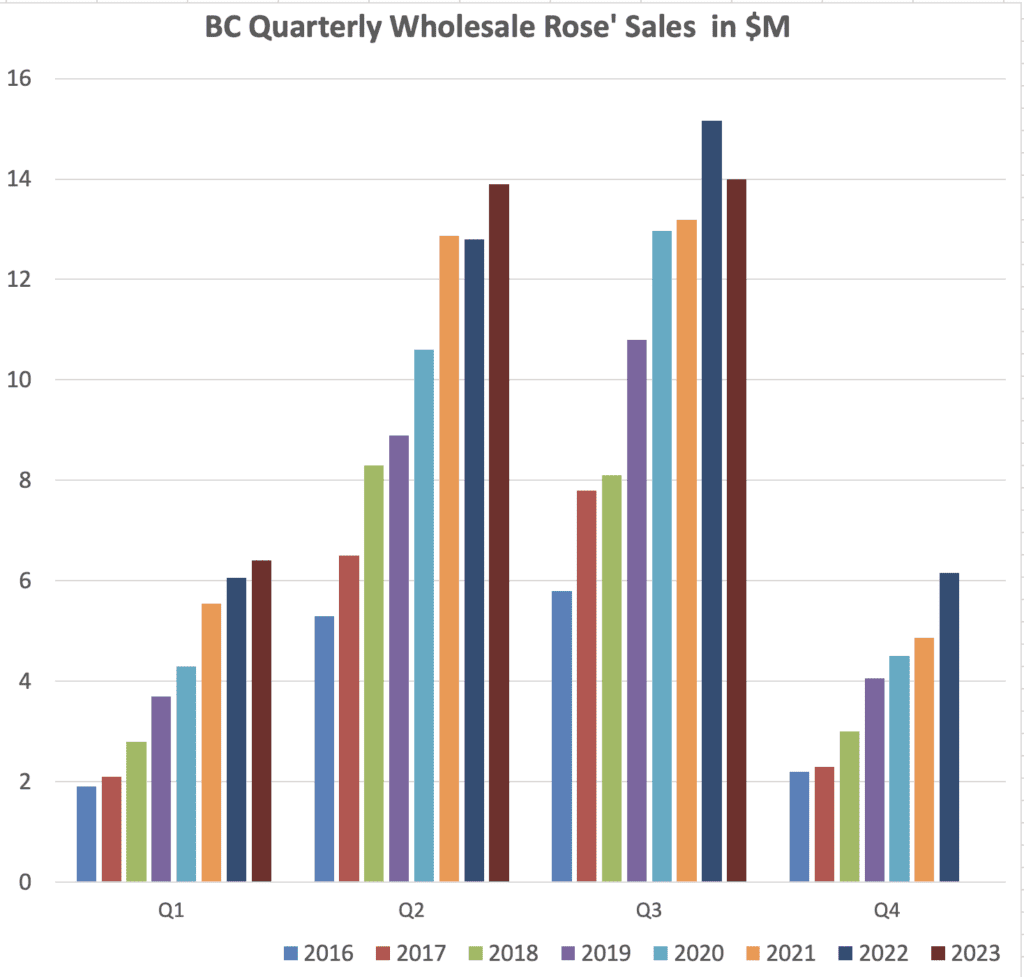The sales numbers are in for the first 9 months of 2023, and the impact of the wildfires on tourism and BC Rosé consumption is telling. For the first time in over 7 years, quarter over quarter BC Rosé sales declined.
Rosé is not the only BC wine segment that has seen sales stall. For an excellent analysis of current BC wine sale challenges, see Wine Takes a Tumble in BC by Paul Rickett.
The chart below is from the BC Liquor Distribution Branch data and shows quarterly BC Rosé sales for the Wholesale Channel. The wholesale channel handles sales to resellers of liquor – private liquor stores, restaurants, pubs and duty-free stores.

BC Rosé Sales
The pandemic didn’t slow BC Rosé sales. In 2020, sales increased at an annual rate of 17% compared to 2019. For 2021, the annual growth rate was still an impressive 12% but did slow, particularly in the summer quarter when British Columbia experienced abnormal heat and wildfire activity, reducing tourist traffic. This pattern was again repeated with wildfires in 2023, and sales for the first 9 months were flat compared to 2022.
Unlike previous years, many BC premier Rosé wineries still have their 2022 vintage for sale!
Global Rosé Trends
France is the world leader in the production of rosé. Provence represents 40% of the French production of all rosé and 5% of the world production of rosé wines. Provence is also the only region in the world specializing in rosé, with almost 90% of total wine production. We are seeing a continued trend towards more dry and off-dry rosé wines in BC.
If you want to buy some excellent value BC pink wines here is a link to 21 BC Rosé under $25 for Summer on the Patio.
There are 150 BC wineries producing rosé, so there are plenty of styles from which to choose.

BC Rosé is a thirst quencher either standalone or with light meals like salads, charcuterie boards, light pasta and rice dishes. Pink wine also works well with seafood, raw and lightly cooked shellfish and grilled fish.
Perfect hot weather drinking or great all year round paired with the right meal.
Source: 1. Liquor Market Review – Fiscal 2021/22 Q3
